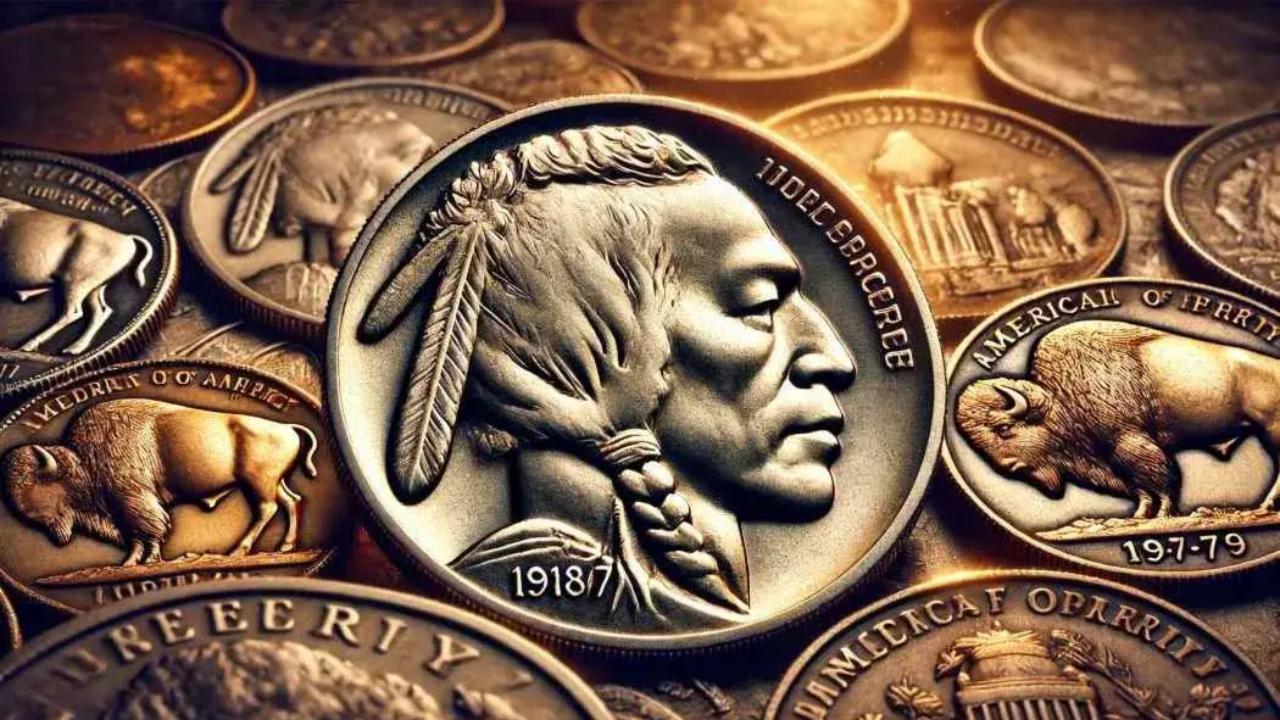Buffalo (or “Indian Head”) nickels had been minted 1913–1938 and are a favorite collection for creditors due to low-mintage key dates, dramatic die errors (overdates, doubled dies), and appealing types inclusive of the “three-leg” 1937-D. Below I’ve prepare a detailed, sensible guide: the pinnacle 10 rarities/types creditors prize, why they matter, recognized public sale highlights, the way to spot them, and buying/selling/conditioning advice.
What Drives Value in Buffalo Nickels
- Varieties & Errors — Overdates (1918/7-D, 1914/3), doubled dies (1916), and well-known varieties (1937-D Three-Leg) deliver robust premiums.
- Condition / Grade — Higher grades (MS65, MS67) command exponential will increase in cost as opposed to circulated pieces.
- Strike Quality — Some issues (specially San Francisco mint) are frequently weakly struck; well-struck cash with complete information are prized.
- Eye Appeal — Original luster, appealing toning, and easy surfaces make cash extra desirable.
- Population Reports — The wide variety of surviving licensed examples in pinnacle condition (PCGS/NGC census) closely affects marketplace cost.
- Provenance & Auction Records — Coins with pedigree or record-breaking income frequently deliver greater prestige.
- Market Demand & Series Popularity — Buffalo nickels are a liked U.S. series; call for from each superior creditors and beginners maintains key dates valuable.
Top 10 Buffalo Nickels & Their Highlights
| Rank | Coin / Variety | Why It’s Special | Auction Record Range* | Key Identification Tip |
|---|---|---|---|---|
| 1 | 1918/7-D Overdate | Famous overdate (7 visible under 8); extremely rare in mint state | Up to ~$350,000+ | Look for traces of “7” beneath the “8” in date |
| 2 | 1916 Doubled-Die Obverse | Dramatic doubling of date & lettering | High five to six figures | Strong doubling on date and “FIVE CENTS” |
| 3 | 1926-S | Lowest-mintage Buffalo nickel (970k) | Tens of thousands in MS | “S” mintmark, weak strike common |
| 4 | 1913-S Type II | Scarce early San Francisco Type II reverse | High five figures in MS67 | Reverse has flatter ground line under buffalo |
| 5 | 1913-D Type II | Rare Denver issue, sought by type/date collectors | High five figures in MS | Same Type II reverse; “D” mintmark |
| 6 | 1914/3 Overdate | 3 visible under the 4; true overdate variety | Strong premiums, esp. MS | Check last digit with magnification |
| 7 | 1937-D Three-Leg | Famous missing front leg variety from die polishing | ~$100,000 in MS66+ | Buffalo’s front leg absent, ground looks smoothed |
| 8 | WWI Overdates (1917/18 family) | Wartime overdates (7 over 8, 8 over 7) scarce | Varies widely, higher in AU/MS | Subtle overlapping numerals in date |
| 9 | 1916/16 Doubled Date | Multiple doubled date/die variants | Premiums in AU/MS | Clear doubling of digits “1916” |
| 10 | Finest-Known Proofs / MS Survivors | Not tied to one year; grade rarity drives value | Five to six figures depending on date | Exceptional strike, preserved surfaces |
Tips for Collectors & What to Watch
- Always check out the sharpness of layout factors consisting of the buffalo’s horn, tail, and the date.
- Use complete horn and complete cheek signs to choose strike quality.
- Be careful of altered or plated cash which are advertised as rarities.
- Always are trying to find certification from depended on grading services.
- Compare with latest public sale outcomes to live present day on marketplace trends.
Also read: Rare 1976 $2 Bill Worth $35,250 The Secret Behind Its Value
Buffalo nickels integrate inventive majesty with gathering challenges. Key dates just like the 1918/7-D overdate, 1916 doubled-die obverse, and 1937-D Three-Legged pinnacle the charts, frequently fetching six-parent sums. If you find out one in sharp condition — mainly certified — you’ll be conserving greater than simply a bit of history; you’ll be conserving a sizable numismatic treasure.
Grading matters — understanding premiums
Buffalo nickels are graded at the 1–70 Sheldon scale (PCGS/NGC). For many key dates: MS60 vs MS65 vs MS67 is an substantial charge jump. Even AU/O grades (approximately put on only) may be really well worth hundreds for a few dates, whilst circulated grades of key dates additionally preserve respectable price. For varieties (overdates/doubled dies), attribution with the aid of using NGC/PCGS can upload price past uncooked grade.
Typical price ranges
- Common date circulated: $1–$50 (relying on put on and date).
- Key dates in VF/AU: Several hundred to numerous thousand.
- Key dates in excessive AU/MS or primary errors/varieties: Thousands to low six figures (examples: 1918/7-D has found out up to ~$350k in step with PCGS public sale history; 1937-D 3-Leg MS66+ found out near $100k in top notch sales).
FAQs
Q1. How can I inform if my Buffalo nickel is valuable?
Check the date, mintmark, strike quality, and any range markers (overdates, doubled dies). Compare to licensed reference snap shots and recall expert grading for confirmation.
Q2. Why are a few Buffalo nickels weakly struck?
San Francisco troubles specifically regularly display susceptible strikes. This is a minting issue, now no longer always wear. Collectors appearance for “complete horn” or “complete cheek” info to choose quality.
Q3. Should I easy my Buffalo nickels?
No. Cleaning damages surfaces and substantially reduces value. Collectors choose cash with authentic patina and luster.
Q4. Are counterfeits common?
Yes. Altered dates and pretend mintmarks exist, particularly on uncommon troubles just like the 1918/7-D. Always purchase costly portions licensed through PCGS or NGC.
Q5. What’s the maximum treasured Buffalo nickel ever sold?
A top-graded 1918/7-D overdate has delivered over $350,000 at auction. High-grade 1916 DDOs and 1937-D 3-Leg examples additionally attain six figures.
